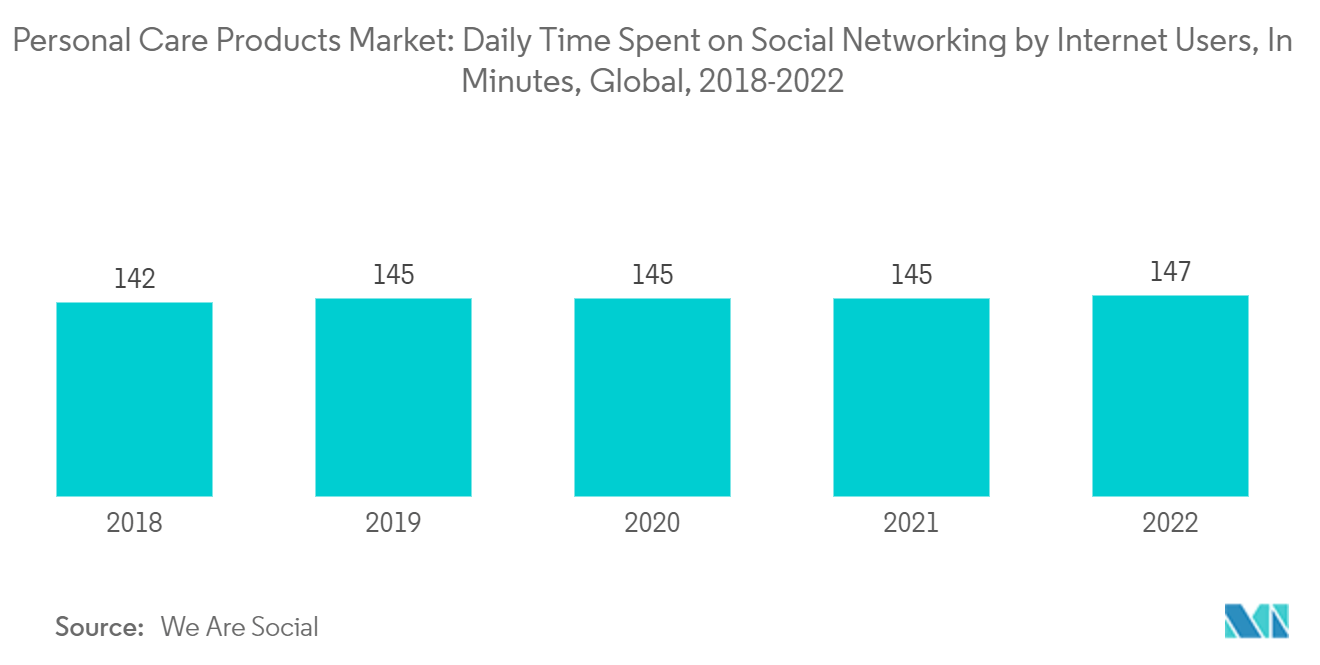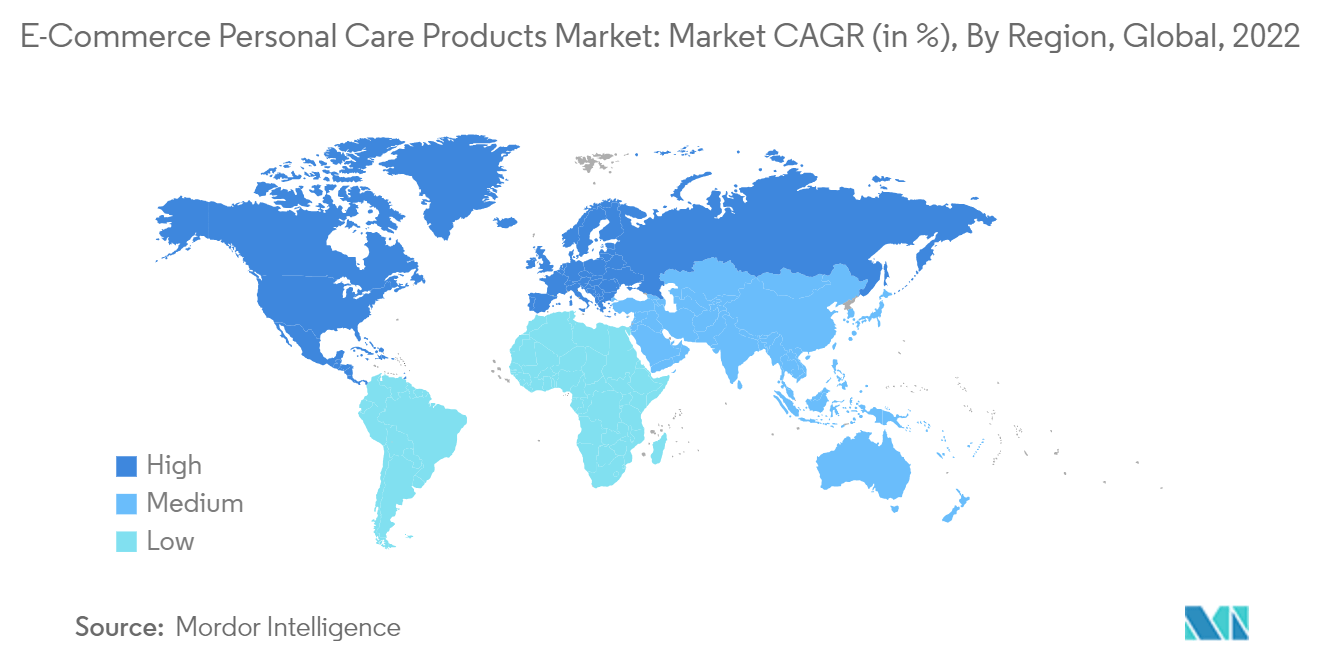Market Trends of E-Commerce Personal Care Products Industry
Growing Influence Of Social Media And Impact Of Digital Technology On The Market
- The emergence of evolving technologies, such as smartphones, personal computers, the Internet, e-commerce, social media, communication strategies, and marketing campaigns, have changed the landscape of the personal care products market. The players operating in the market have been using influencer marketing on social media to influence customers and encourage advertisers and marketing practitioners to shift their brand conversations in the digital space.
- Social media has become an increasingly important platform for brands to showcase their products. Social media posts can reach a wide range of potential customers across the country and generate buzz, particularly in the beauty and personal care industry. Leading brands such as L'Oréal, Unilever, and Estée Lauder, among others, have been turning to Facebook, Instagram, and YouTube to promote product launches and engage their consumers with tutorials and promotional campaigns.
- Additionally, the e-commerce industry has witnessed tremendous growth in Mexico in the past three years, taking the lion's chunk, with the 18-45 age group continuously engaged in shopping and contributing to the growth. According to the International Trade Administration (ITA), the percentage of the population of e-commerce users in Mexico has increased from 37.1 million users in 2017 to 57.5 million users in 2021, which can be considered a trend that supports the growth of e-commerce. Availability of a wide range of products, coupled with discounted prices offered compared to other distribution channels, is expected to drive e-commerce sales growth in Mexico.
- Also, social media platforms have helped expand the reach of smaller companies or start-up brands which lack large marketing budgets or, in some cases, even an offline presence. These brands have also been focused on sharing their narrative and ideology, along with a detailed description of the ingredients used in their products and their sources, with potential consumers to create a sense of transparency and awareness, which in turn helps attract a larger consumer base.
- Consumers are more likely to discover new brands or products via advertisements and updates on brands' social media pages on platforms including Facebook and Twitter. Furthermore, personal care product consumers tend to consider product reviews and other consumers' opinions in the form of recommendations, comments on social media, posts from expert bloggers, or celebrity endorsements before making their purchase decision.

Asia-Pacific Emerges as the Fastest-Growing Region
- In the Asia-Pacific region, countries like China, India, Japan, Indonesia, and Vietnam present considerable growth opportunities for the market players, primarily due to the growing millennial population and increased use of e-commerce platforms for beauty and personal care shopping. For instance, according to We Are Social, the Internet penetration rate in India went up to nearly 48.7% in 2022.
- Consumers may easily acquire a wide variety of personal care products from different brands and pricing points owing to e-commerce. Customers may research and compare various products from the comfort of their homes via online platforms, read reviews, and make educated purchases. This convenience element has significantly fueled the expansion of e-commerce in the personal care sector.
- The key players in the Asia-Pacific personal care products market are mainly focusing on new product development and expansion. For instance, in January 2023, Eucerin launched its first Asia-exclusive product with the Eucerin Even Radiance range. The company claims that the range is tailored to the strong regional demand for skin-brightening products and the resulting care needs. Alongside moisturizing creams, it includes an eye cream, a sheet mask, and ampules. The Eucerin Even Radiance Range will be accessible in all major pharmacies as well as on e-commerce platforms.
- With the increasing penetration of the Internet, the online channels for the purchase of consumer goods witnessed rapid growth in the last there or four years in India. This category attracted a few specialists, like Nykaa, Purplle, Nnnow, etc., who are utilizing the increasing e-tailing growth and vying for a significant pie in the online personal care product space. Nykaa offers more than 600 brands in both offline and online stores in India. Additionally, to draw in more customers, companies have begun to release products with premium botanical components.
- Moreover, Australian women also spend more money on personal care items. As a result, this is anticipated to have an impact on market growth in the approaching years. For instance, the average Australian woman spends about USD 3,600 a year on beauty and personal care items, according to an online retailer, Catch.com.au Pty Ltd.

